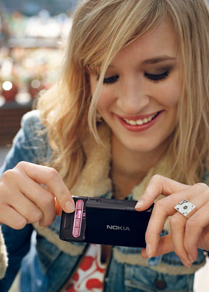No more telling Mom you can't talk because your cell phone is "about to die"--it soon could be charging itself as you speak.
The Nokia Research Centre in Cambridge, England, is working on a
prototype system that would eliminate the traditional cell phone
charger.
The system collects energy from ambient radio waves emitted by
antennas, TV masts, Wi-Fi transmitters, and the like. This might all
sound uber-scientific, but we've been using this technology for years.
Have you ever exited a store, only to hear the beep, beep, beep of an
accusing alarm system? Many retailers use radio frequency
identification to prevent theft and track inventory. Like RFID tags,
the Nokia phones would catch radio waves across a range of frequencies,
harnessing them for power.
Nokia's goal is to get cell phones to harvest about 50 milliwatts
of power. Currently the prototypes are able to harvest up to 5
milliwatts, but at least 20 milliwatts is needed to keep phones running
in standby mode indefinitely without the need for a recharge, the
U.K.'s Guardian reports in an article on Nokia's research.
We're not quite sure what features 50 milliwatts could power:
music playing? 3G Internet browsing? As consumers increase their
business- and entertainment-related dependency on cell phones, Nokia
might have to adjust its 50-milliwatt goal. For a more functional
lifestyle device, the phone would need to be paired with a
solar-paneled case, or even an occasional wired charge.
The Nokia Research Centre has said the technology will take three
to five years to develop. Though this would presumably be the first
time electromagnetic radiation is applied to a mainstream consumer
product, wireless charging has already hit the market. This month, Palm
introduced a wireless charger, the Touchstone, for its much-anticipated
Palm Pre.
The Touchstone uses a method referred to as inductive charging.
The electric toothbrush is one of the most common devices that applies
this technology.


No comments:
Post a Comment